Gaming enthusiasts are always looking for ways to improve their gaming experience. One crucial aspect that can significantly impact gameplay is the Frames Per Second (FPS) rate. A higher FPS means smoother gameplay, more responsive controls, and a more enjoyable overall experience. This article will discuss some practical tips and tricks to help you get more FPS in video games. Let’s dive right in!
Optimize your in-game settings
Optimizing your in-game settings is crucial for achieving the best gaming experience possible. With many options available in most modern video games, finding the perfect balance between visual quality and performance can be challenging. Here are several settings you can adjust to improve your frames per second (FPS) without sacrificing too much on the visual aspect, ensuring that your gameplay remains smooth and responsive.
Lowering graphics quality
Sometimes, the key to improving your FPS is as simple as adjusting the in-game settings. Lowering the graphics quality can lead to a noticeable improvement in your frame rate, and the process won’t leave you with a poor gaming experience. Experiment with different settings to find the perfect balance between visual quality and performance.
Some of the options you should consider adjusting include:
- Texture Quality: High-resolution textures can consume a significant amount of VRAM and may cause lower FPS on systems with limited graphics memory. Reducing texture quality can free up VRAM and improve performance without drastically affecting the overall visual experience.
- Draw Distance: This setting determines how far away objects are rendered in the game. Lowering the draw distance reduces the number of objects displayed on-screen, which can reduce the load on your GPU and increase FPS.
- Level of Detail (LOD): LOD settings control the complexity of in-game models and objects. Lowering the LOD reduces the number of polygons used in rendering, which can lead to higher FPS on systems with weaker GPUs.
- Post-processing Effects: Many games include post-processing effects like bloom, depth of field, or screen-space reflections. These effects can be resource-intensive and disabling or lowering their quality can result in a noticeable performance boost.
Lowering graphics quality can lead to a significant increase in FPS, but the exact improvement will vary depending on your system’s hardware and the specific game you’re playing. For example, reducing the texture quality, draw distance, and level of detail (LOD) can potentially result in an FPS increase of 20-50%.
Disabling or lowering the quality of post-processing effects can further improve FPS by 10-30%.
Keep in mind that these numbers are estimates, and the actual performance gains may be higher or lower based on your unique system configuration and the game in question.
Disabling unnecessary features
Certain in-game features can be resource-intensive and contribute to lower FPS. Disabling these features can significantly boost performance without significantly affecting the overall visual quality. Some of these features include:
- Motion Blur: Motion blur is an effect that simulates the blurring of objects when they move at high speeds. While it can add a sense of realism to some games, it can also be quite taxing on your system resources. Disabling motion blur can help improve FPS and make your game run smoother.
- Anti-aliasing: Anti-aliasing smooths out jagged edges in video games, making the overall image look more polished. However, it requires considerable processing power and can slow down your FPS. There are different types of anti-aliasing, such as MSAA, FXAA, and TXAA, with varying levels of performance impact. Experiment with turning off or lowering the anti-aliasing settings to see if it helps boost your FPS.
- Ambient occlusion: Ambient occlusion is a shading technique that adds depth and realism to video game environments by simulating how light behaves in real life. It can contribute to a more immersive gaming experience, but it also consumes a significant amount of processing power. Disabling ambient occlusion or lowering quality can result in higher FPS without dramatically altering the game’s appearance.
- Shadows and Reflections: High-quality shadows and reflections can make a game world look more realistic and visually impressive. However, rendering these effects can be pretty demanding on your system resources. Reducing shadow and reflection quality, or disabling them entirely, can lead to a noticeable improvement in FPS.
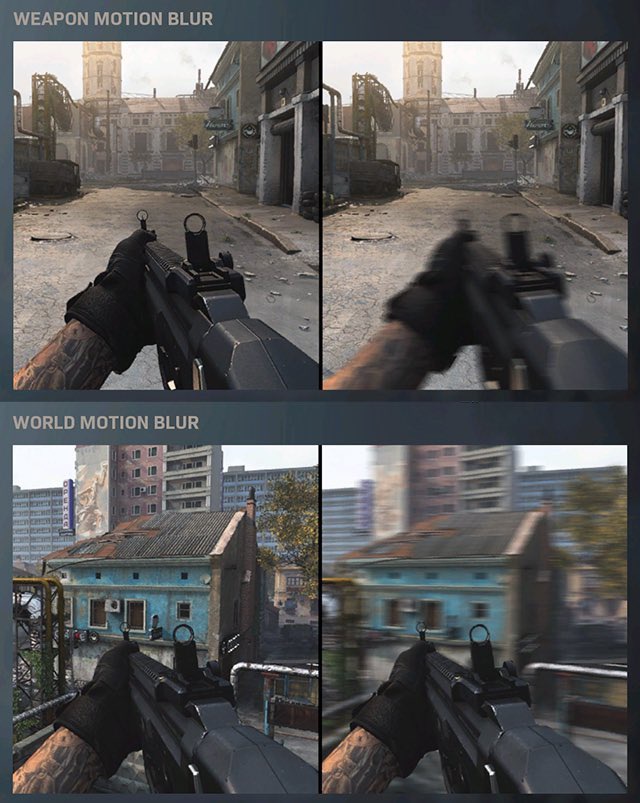
V-Sync
V-Sync, or Vertical Synchronization, is a feature that synchronizes a game’s frame rate with the refresh rate of your monitor to prevent screen tearing. Screen tearing occurs when your GPU renders frames faster than your monitor can display them, causing parts of different frames to be displayed simultaneously.
While V-Sync can help eliminate screen tearing and provide a smoother visual experience, it can also decrease FPS, particularly if your system is struggling to maintain a stable frame rate that matches your monitor’s refresh rate. Additionally, V-Sync may introduce input lag, making the game feel less responsive.
Disabling V-Sync can potentially increase your FPS and reduce input lag. However, if you’re experiencing significant screen tearing, you might want to consider alternative solutions, such as using G-Sync or FreeSync-compatible hardware, which dynamically adjusts the refresh rate of your monitor to match the frame rate of your game, providing a tear-free experience without the downsides of traditional V-Sync. To make this work, your Graphics Card must have support for the exact technology given by your monitor.
Tweak your hardware settings
Tweaking your hardware settings is another important aspect of improving your gaming performance. Ensuring your computer’s components function at their peak can lead to higher frames per second (FPS) and a smoother gaming experience. This section will explore various ways to optimize your hardware settings, from updating your drivers to adjusting power options.
Updating your drivers
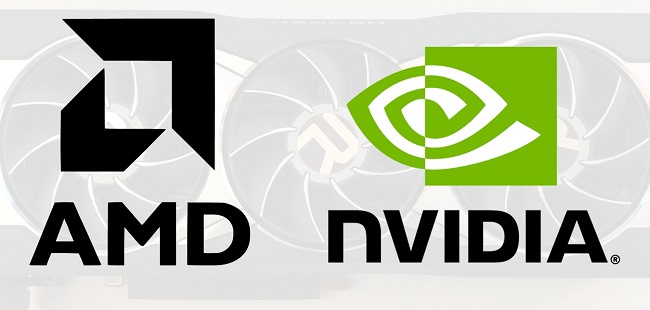
Outdated drivers can cause performance issues and lower FPS in video games. Regularly updating your GPU drivers ensures optimal performance and compatibility with the latest games and software. Manufacturers like NVIDIA and AMD frequently release new driver updates, so stay on top of the latest releases. Here’s how you can keep your drivers updated:
- Automatic updates: Many GPUs have software that automatically checks for driver updates and installs them for you. NVIDIA GeForce Experience and AMD Radeon Software are two such examples. By enabling automatic updates in these applications, you can ensure that your GPU drivers are always up-to-date without manual intervention.
- Manual updates: You can manually download and install GPU drivers from the manufacturer’s website if you prefer more control over the update process. Visit the NVIDIA or AMD website, navigate to their driver download section, and input your GPU model to find the appropriate driver. Make sure to download the latest version and follow the installation instructions provided by the manufacturer.
- Clean installations: Sometimes, updating your GPU drivers may not be enough. Sometimes, leftover files from previous driver installations can cause conflicts and negatively impact performance. Performing a clean installation of your GPU drivers can help resolve these issues. Both NVIDIA and AMD offer options for a clean installation during the driver update process. Select this option when updating your drivers to ensure a fresh start.
- Rolling back drivers: Occasionally, a new driver update might introduce performance issues or compatibility problems. In such cases, rolling back to a previous, stable driver version can help. To do this, open the Device Manager on your computer, locate your GPU under “Display Adapters,” right-click on it, and select “Properties.” Navigate to the “Driver” tab and click “Roll Back Driver” to revert to an earlier version.
Overclocking your GPU
Overclocking is increasing the clock speed of your GPU beyond its factory settings. This can lead to a noticeable improvement in FPS, especially in more demanding titles. Before overclocking, research the specific GPU model and consult tutorials or guides to ensure you don’t damage your hardware.
Overclocking your GPU can lead to permanent damage if done incorrectly. Make sure to follow the instructions provided by the manufacturer and proceed at your own risk.
The tradeoff is that overclocking, if done correctly, can lead to a noticeable improvement in FPS, especially in more demanding titles.
Optimize your operating system
From adjusting power settings to managing background applications, there are several ways to fine-tune your operating system for better gaming performance. By taking the time to optimize these settings, you can ensure that your computer is dedicating the maximum amount of resources to your games, resulting in higher frames per second (FPS) and a more enjoyable gaming experience.
Adjust power settings
Your computer’s power settings can directly affect gaming performance. Switch to a high-performance power plan in your operating system settings to maximize FPS. This will ensure your computer is using its resources efficiently and can lead to improved FPS in video games.
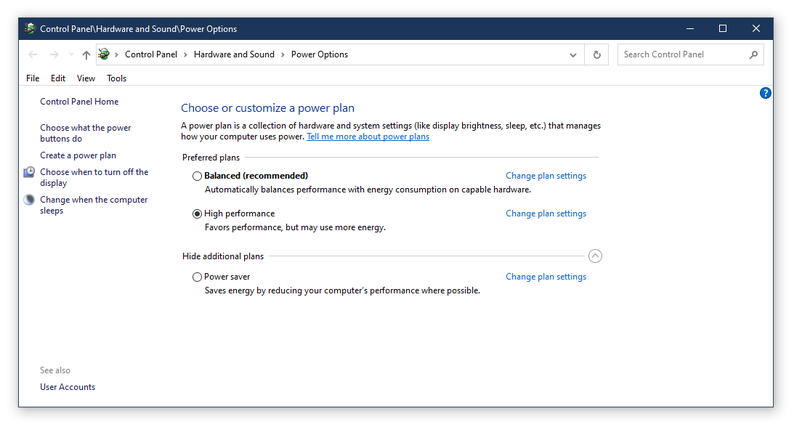
To change your power settings on a Windows computer, follow these steps:
- Right-click on the battery icon in the system tray (or search for “Power Options” or “Edit power plan” in the Start menu) and select it.
- You will see a list of power plans in the Power Options window. Choose the “High performance” plan. If you don’t see it, click “Show additional plans” to reveal it.
- Click on “Change plan settings” next to the “High performance” plan, and then click on “Change advanced power settings.”
- In the Advanced settings tab, ensure all settings are optimized for performance. For example, ensure that the Processor power management is set to 100% for both “Minimum processor state” and “Maximum processor state.”
- Remember to switch back to a power-saving plan when you’re not gaming, especially if you’re using a laptop, to conserve battery life.
Close background applications
Background applications can consume valuable system resources and negatively impact gaming performance. Before launching a game, close any unnecessary applications and processes to free up resources and improve FPS.
To close background applications on Windows, use the Task Manager:
- Press Ctrl + Shift + Esc or right-click on the taskbar and select “Task Manager” to open it.
- Click on the “Processes” tab to view all running applications and background processes.
- Sort the list by CPU, Memory, or GPU usage by clicking on the respective column headers. This will help you identify resource-intensive applications.
- Select the applications or processes you want to close, and click on “End task” at the bottom right corner.
Be cautious when closing background processes; some may be critical for your system’s stability. Only close processes that you recognize and are sure won’t cause issues.
Upgrade your hardware
Upgrading your hardware can significantly improve your gaming experience by increasing FPS and overall system performance. Two key components to consider upgrading are your GPU and RAM. Here are some recommendations and benefits of upgrading these components.
Invest in a better GPU
A powerful GPU is crucial for achieving high FPS in video games. If your current GPU is outdated or underpowered, consider upgrading to a newer, more powerful model to improve your gaming experience.
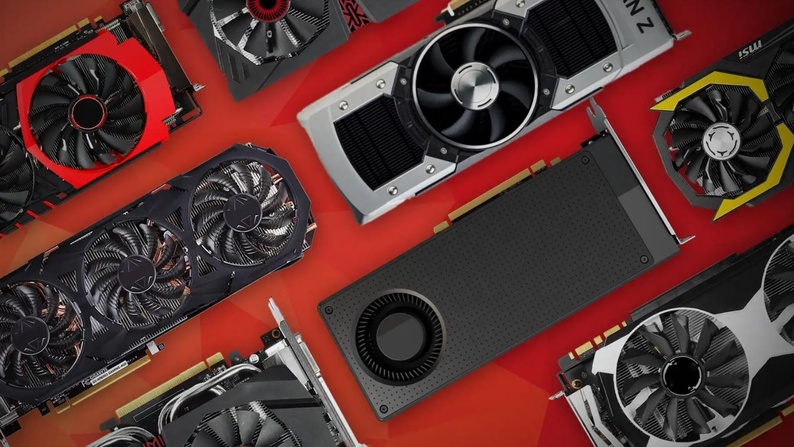
Here are some recommendations:
- Determine your budget: GPUs come in various prices, so establish your budget. This will help you narrow your options and find the best GPU within your price range.
- Research performance: Look for benchmarks and reviews online to compare the performance of different GPUs. Websites like TechPowerUp and Tom’s Hardware offer comprehensive reviews and performance comparisons of various GPUs.
- Consider VRAM: The amount of Video RAM (VRAM) a GPU has can impact game performance, especially at higher resolutions. Aim for a GPU with at least 6GB of VRAM for 1080p gaming and 8GB or more for higher resolutions like 1440p or 4K.
Upgrading your GPU can bring several benefits to your gaming experience, including:
- Higher FPS in games, leading to smoother gameplay and more responsive controls
- The ability to play games at higher resolutions and with the better visual quality
- Support for advanced graphical features, such as ray tracing and real-time global illumination
Increase RAM capacity
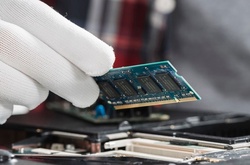
- Check compatibility: Before upgrading your RAM, check your motherboard’s specifications to determine the maximum RAM capacity and supported memory type (DDR3, DDR4, etc.).
- Choose the right capacity: A minimum of 8GB of RAM is recommended for gaming. However, 16GB is becoming the new standard for modern games and can provide a significant performance boost. If you plan to run multiple applications simultaneously or engage in content creation, consider 32GB or more.
- Consider RAM speed: Higher RAM speed can lead to better performance in some games. Look for RAM with a speed of at least 2400 MHz for DDR4 or 1600 MHz for DDR3.
Upgrading your RAM can bring several benefits to your gaming experience, such as:
- Improved performance in games with large open worlds or complex scenes
- Faster loading times for game assets and reduced stuttering during gameplay
- The ability to run multiple applications simultaneously without impacting game performance
To wrap up, achieving higher FPS in video games requires optimizing in-game settings, tweaking hardware settings, and fine-tuning your operating system. Following the tips outlined in this article can significantly improve your gaming performance and help you enjoy a smoother, more responsive experience.
Remember that every system is unique; finding the perfect balance between visual quality and performance may require experimentation. Feel free to test different settings and configurations to unlock your computer’s potential and maximize your gaming sessions. Happy gaming!


